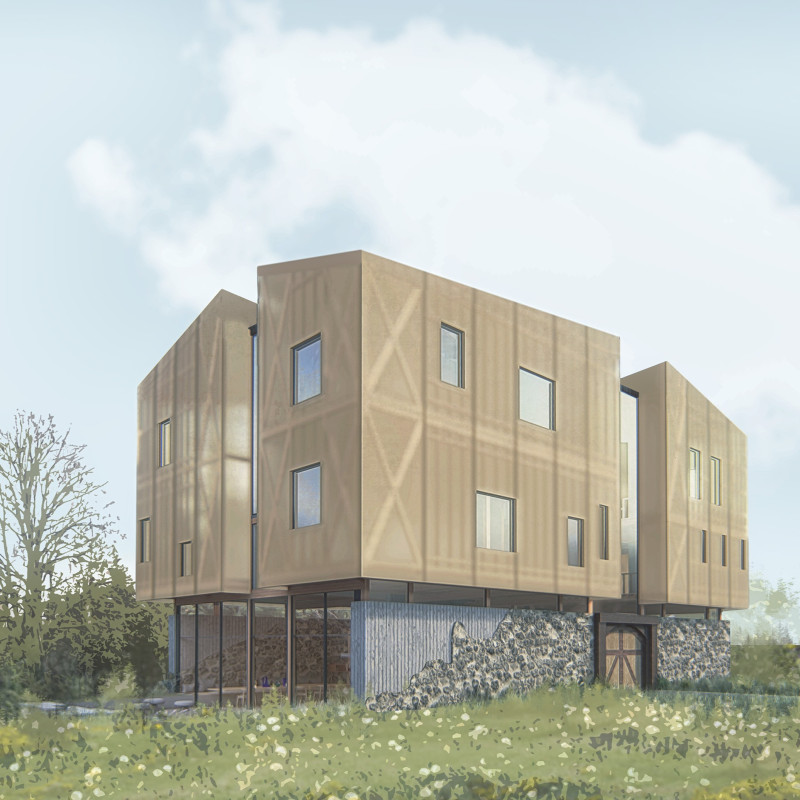5 key facts about this project
The design integrates seamlessly with the natural environment, displaying a careful consideration of both form and context. The structure is multi-leveled, allowing for diverse spatial organization that promotes interaction and exploration. On the ground level, the layout encompasses shared areas such as a spacious living room and a fully functional kitchen. These communal spaces encourage guests to gather, share meals, and partake in social experiences, reinforcing the idea of community within the retreat. Adjacent to these areas, workshop spaces dedicated to tea production are strategically placed to facilitate a hands-on approach, allowing guests to learn about and engage with the art of tea-making.
Upper levels of the guest house accommodate private rooms, designed for comfort and tranquility. Each bedroom features expansive windows that frame stunning views of the surrounding landscape, emphasizing the indoor-outdoor connection. Natural light plays a pivotal role in the ambiance of these spaces, creating a serene environment conducive to rest and contemplation. The elevated design minimizes the building’s footprint on the land, blending harmoniously with the topography and ensuring minimal disruption to the existing ecosystem.
Materiality is another significant aspect of the Teamakers Guest House design. The choice of materials reflects a commitment to sustainability and local craftsmanship. Wood is extensively utilized, providing warmth and an organic quality to the interiors. Stone elements are thoughtfully incorporated, both as functional structures and as a nod to the region's historical architecture. The use of polycarbonate panels in the façade introduces an innovative element, allowing filtered light while maintaining privacy in communal spaces. Additionally, concrete is employed for outdoor seating areas, balancing durability with modern design aesthetics.
Unique design approaches are evident throughout the project. The integration of natural elements within the architectural design encourages guests to engage with the environment. Outdoor seating areas and gardens are incorporated, creating inviting spaces where visitors can enjoy the surrounding nature. This blurring of boundaries between interior and exterior spaces fosters a sense of connectedness with the landscape, enhancing the overall retreat experience.
Furthermore, the project focuses on sustainable principles, with design strategies aimed at minimizing the building's environmental impact. Passive solar heating is achieved through careful orientation and material selection, ensuring energy efficiency while enhancing occupant comfort. The alignment of the building within its site promotes natural ventilation and daylighting, further emphasizing sustainability as an integral component of the architectural ethos.
In essence, the Teamakers Guest House is a project that embraces its natural context while providing a functional and inviting retreat for visitors. The thoughtful spatial organization, careful material selection, and innovative design elements exemplify a cohesive architectural narrative that is both pragmatic and enriching. To explore the architectural plans, sections, and design ideas of this project further, interested readers are encouraged to delve into the presentation available for a more comprehensive understanding of the design’s intricacies and intentions.


























